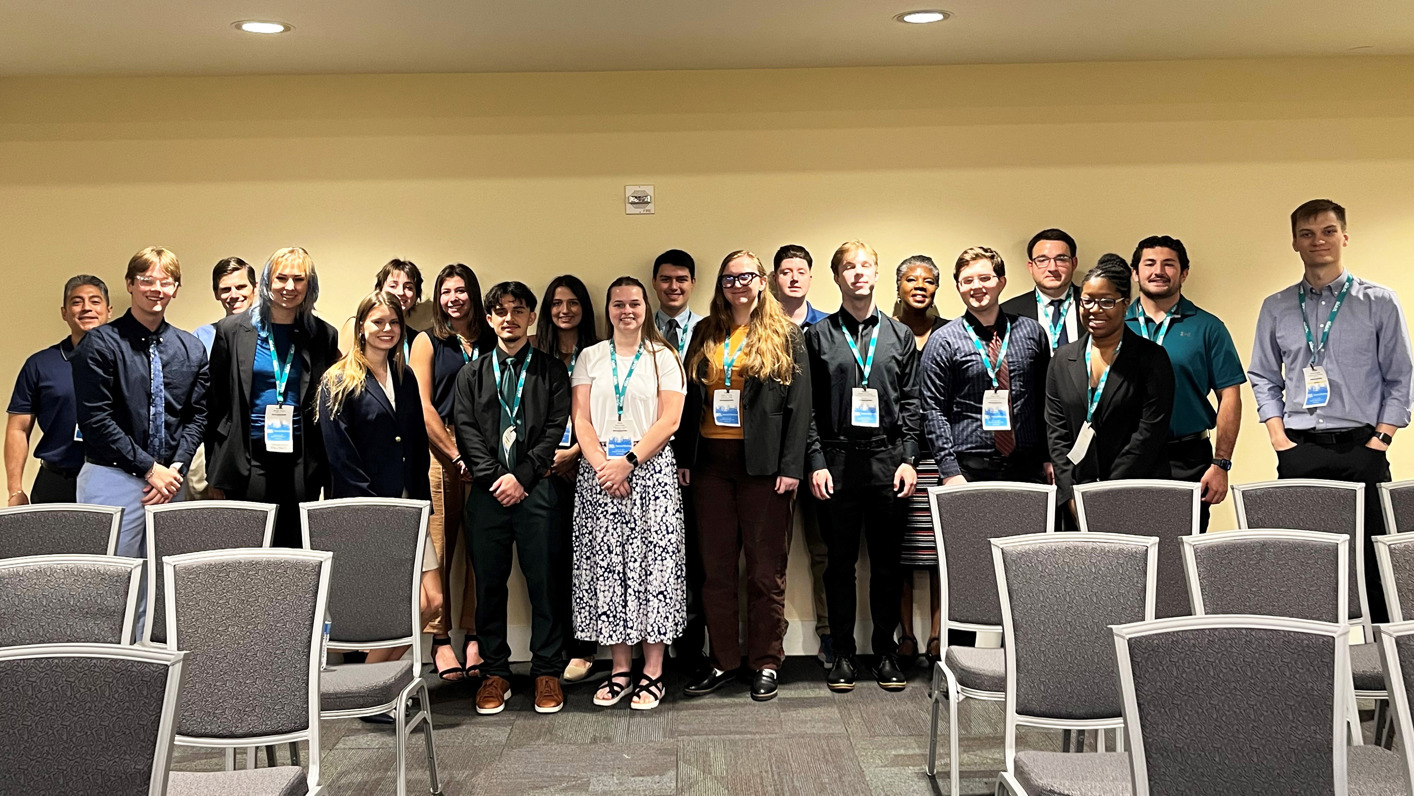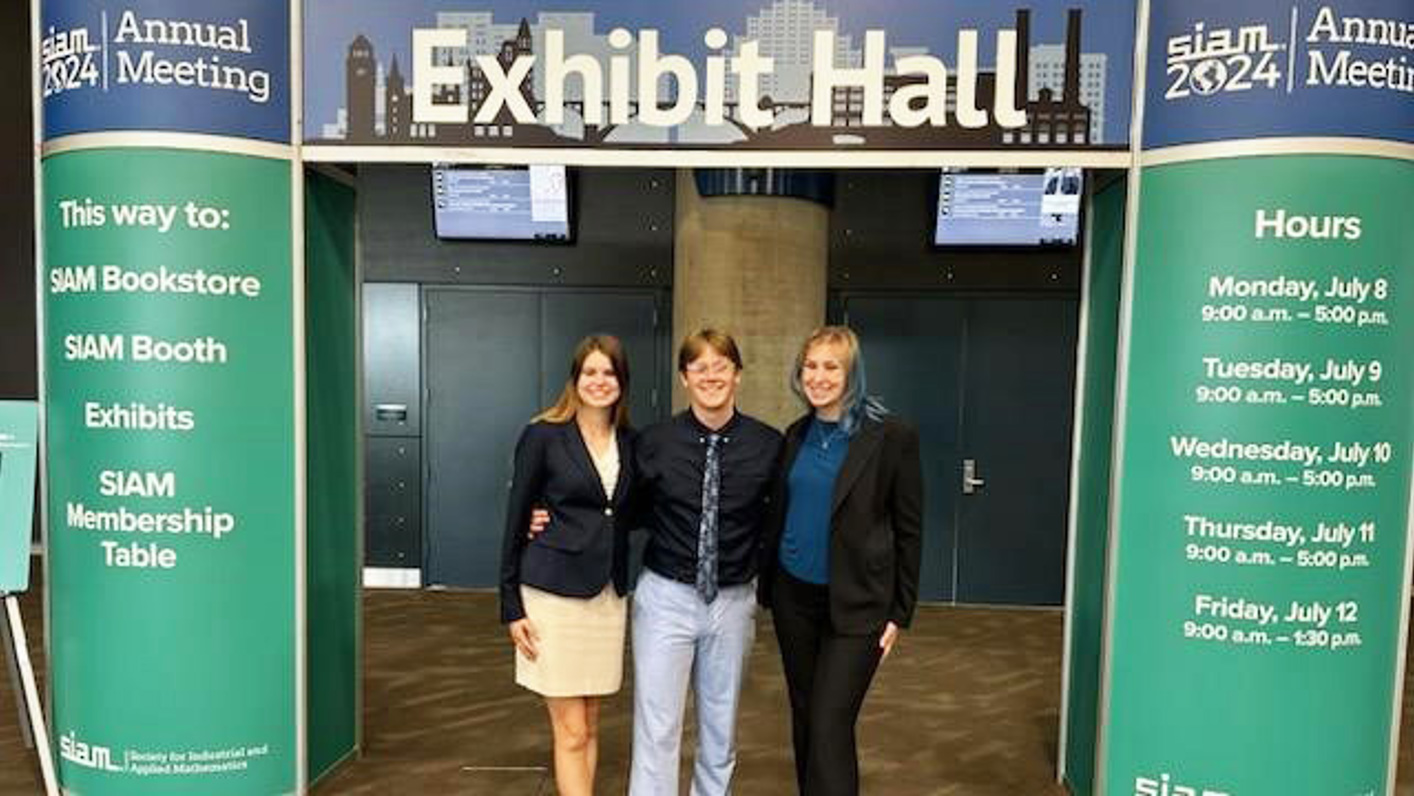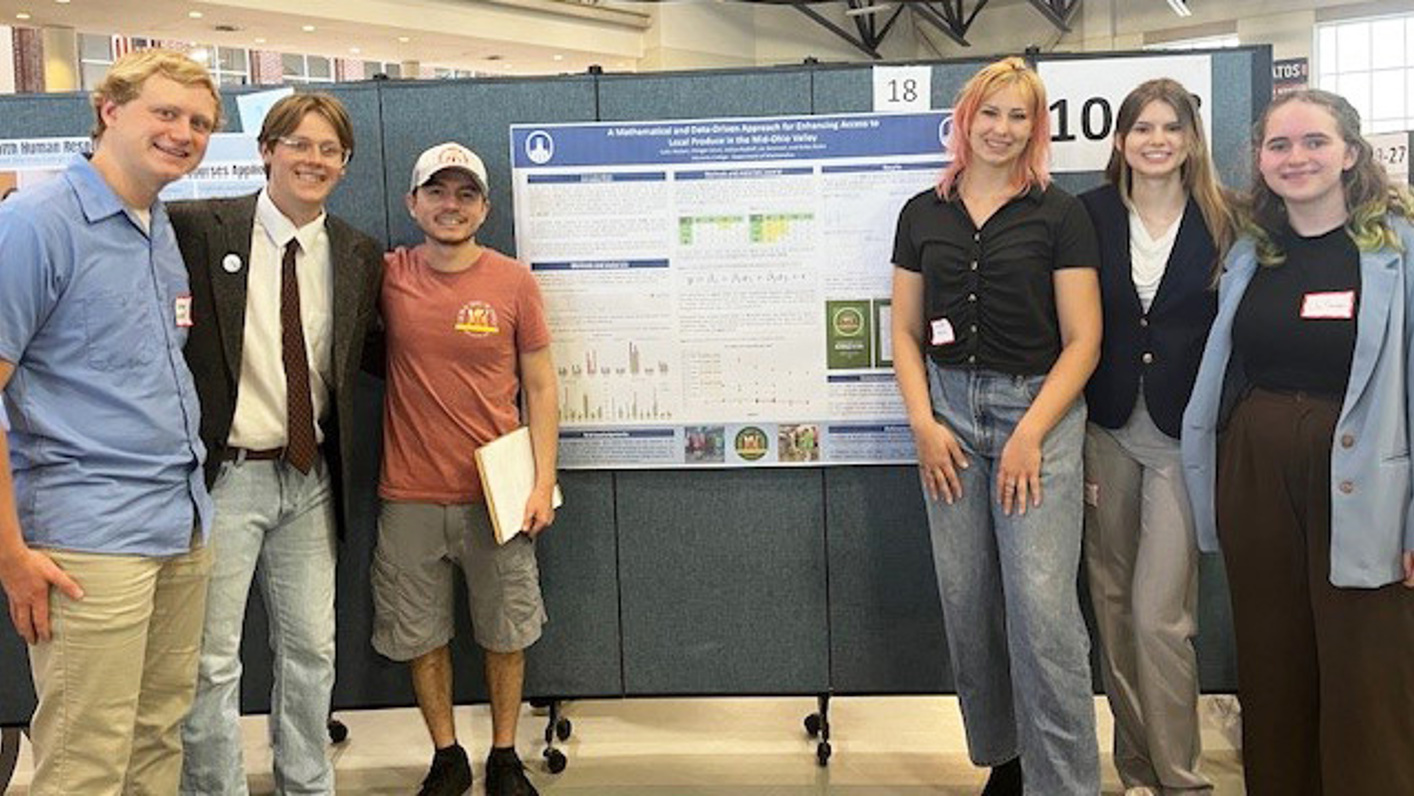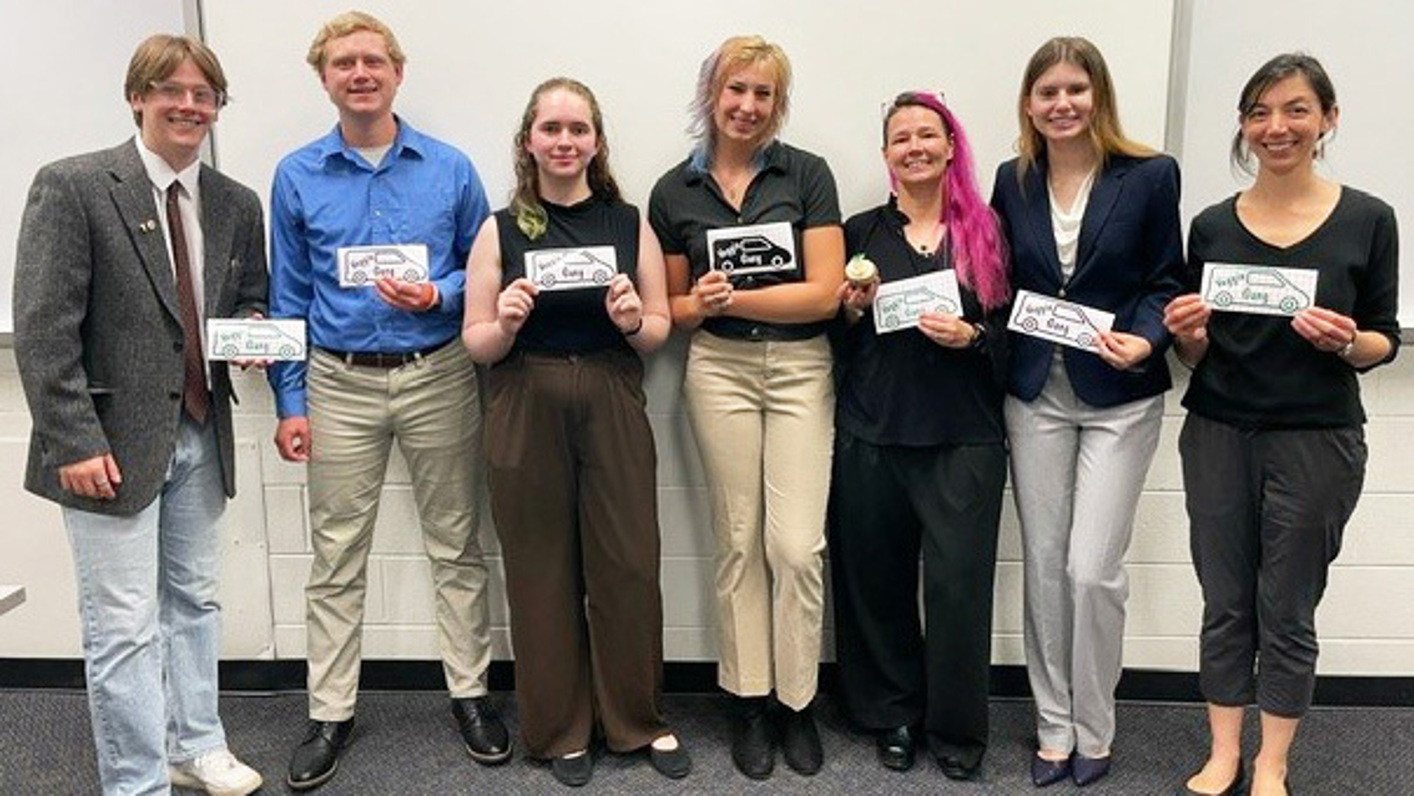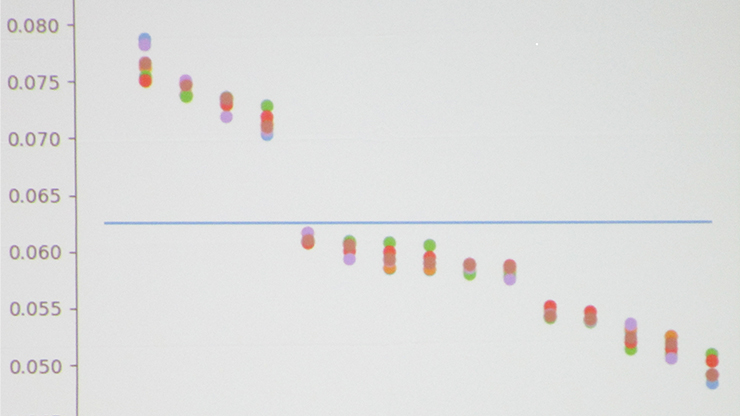Reflections from a Student in the PIC Math Program
As a dual-enrollment student at Marietta College earlier this year (earning both high school and college credit), I was invited to enroll in a course that uses numerical analysis to solve real-world problems. This class—which consisted of only five hand-selected students—was part of Preparation for Industrial Careers in Mathematical Sciences (PIC Math), a joint program of SIAM and the Mathematical Association of America that engages undergraduate students in the mathematical sciences with industry-based research problems.
When I walked into the classroom for the first time, I admittedly felt out of place. I did not have much math experience (besides the successful completion of Calculus I and II), nor had I ever conducted research. Although I had been taking college courses full time for several semesters, I was still technically a high school student. During the first few sessions, I looked to the professor for instructions about procedures and grading but quickly learned that the project would be different than standard assignments.
Put simply, my team and I had to think of creative ways to solve a problem that did not have one correct solution. We were working with a local food insecurity nonprofit called Community Food Initiatives (CFI) to help them source produce without over- or underspending at a local produce auction. Our group began by creating a table of contents to organize the messy and overwhelming amounts of data, then consulted a CFI representative to obtain more information. During the first presentation about our progress, I remember sweating and trying to stabilize my shaking hands on my hips.
From that point on, it was a marathon. I started cleaning the data and creating visual representations in Kaggle—a program with which I had no prior familiarity—and converted vegetable units in Microsoft Excel, connecting the task at hand to dimensional analysis concepts that I learned in general chemistry. My prowess with Excel improved rapidly, and soon I was generating calibration curves and writing formulas for numerous rows of data. I watched YouTube videos to educate myself on confidence intervals and learned about graphical user interfaces, profitability ratios, pivot tables, the independent private values model of game theory, and the use of artificial intelligence as a resource.
Throughout the course, my team and I delivered six presentations and wrote six reports. As a result, I better acquainted myself with PowerPoint and Word and gaining confidence with public speaking. As I updated other people on my progress both inside and outside of the classroom, I learned that it’s okay to disclose when I do not yet have an answer. I also made a habit of editing my group’s reports and presentations, humorously earning myself the title of “grammar police.” While I initially did not feel that I had the credibility to provide constructive feedback, I became comfortable doing so. Ultimately, I was able to capture the results of the semester’s work by grounding the mathematical model into a product that was useful for our clients at CFI.
My participation in the PIC Math program increased my confidence, aptitude for critical thinking, and problem-solving skills — all while helping the local community. And although I have listed the many things that I have learned and improved upon during the course, my most valuable takeaway has still not made it onto the page. Thought it’s difficult to define, I believe the phrase that best summarizes it is self-efficacy. PIC Math cultivated an internal belief that I am capable of success, even without extensive prior experience; I am forever grateful to the program for my newfound assuredness in my ability to work through a problem and figure things out.
My professor, Michelle Jeitler, opened my mind, encouraged my growth, and frequently reassured me through her comments. She never said, “Great job on that exam!” Instead, she would say, “I was proud of you for speaking up,” or “You did great setting boundaries today.” Professor Jeitler continually offered positive reinforcement—for example, when our team made the decision to round the conversion of pecks to bushels since doing so was not an ethical concern—expressed praise for accomplishments that were otherwise not testable or definable. She taught me to take pride in more than just exam grades, standardized tests scores, and class rank.
I am proud of my work for PIC Math! The program challenged me in new ways, and my team and I solved a real-world problem that benefited our local community. I became skilled at simultaneously balancing multiple tasks, learned how to work with a team, and developed confidence in my own. I now have self-efficacy, and that is invaluable.
To conclude the project, our group traveled to Spokane, Wash., this July to share our work with applied mathematicians and other aspirational students at the 2024 SIAM Annual Meeting (AN24). Suzanne Weekes, the chief executive officer of SIAM, attended our presentation and gave us personal feedback. It was a great privilege to be part of the PIC Math program and present at AN24, and I encourage other students to take advantage of this and other similar opportunities.
About the Author
Dallas Bolen
Undergraduate student, Washington and Lee University
Dallas Bolen is a first-year student and Johnson Scholarship recipient at Washington and Lee University, where she is studying biochemistry and finance. While she was in high school, she studied at Marietta College and completed a Preparation for Industrial Careers in Mathematical Sciences (PIC Math) course that used mathematics to increase local produce access in the Mid-Ohio Valley.
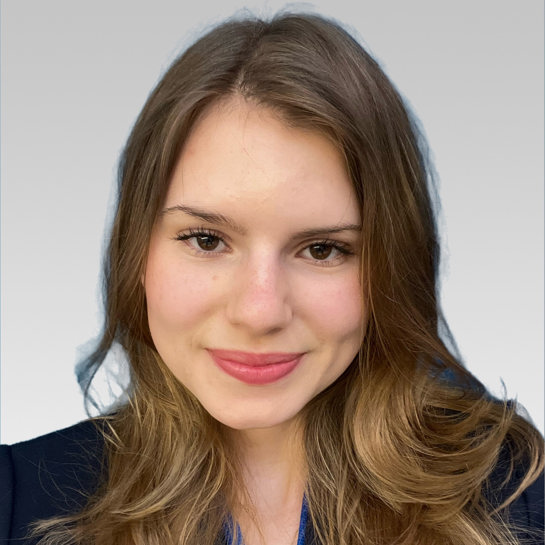
Related Reading
Stay Up-to-Date with Email Alerts
Sign up for our monthly newsletter and emails about other topics of your choosing.




